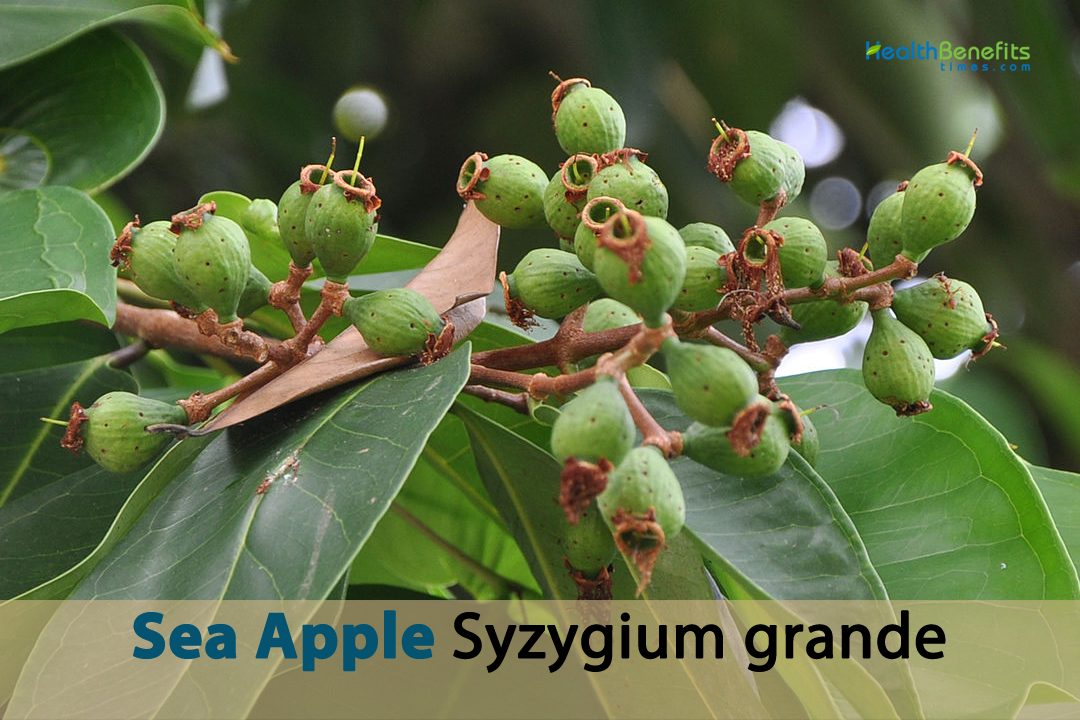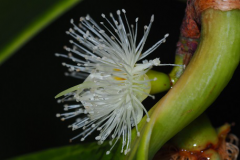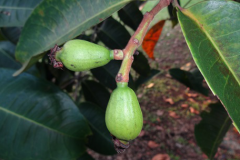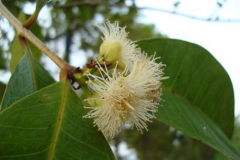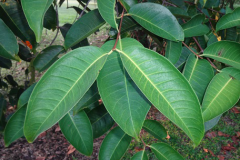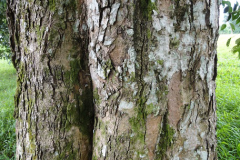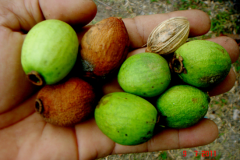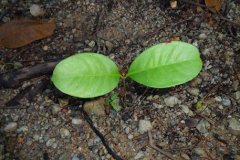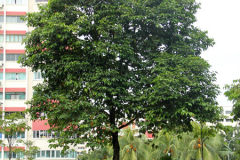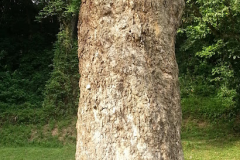| Sea Apple Quick Facts | |
|---|---|
| Name: | Sea Apple |
| Scientific Name: | Syzygium grande |
| Origin | Andaman Islands, Assam, Bangladesh, Brunei, Borneo, Cambodia, China |
| Colors | Apparently green when ripe |
| Shapes | Somewhat globular, urn-shaped to ellipsoid berries, 1-2 cm in length |
| Health benefits | Rich in Antioxidants, Boosts Immunity, Regulates Blood Sugar Levels, Improves Digestive Health, Anti-Inflammatory Properties, Improves Skin Health |
| Name | Sea Apple |
|---|---|
| Scientific Name | Syzygium grande |
| Native | Andaman Islands, Assam, Bangladesh, Brunei, Borneo, Cambodia, China (Chongqing, Guizhou, Hubei, Sichuan and Yunnan), India, Indonesia, Laos, Peninsular Malaysia, Myanmar, Singapore, Sri Lanka, Sumatra, Thailand and Vietnam |
| Common Names | Sea Apple, Jambu Laut, Kilat Jambu, Jambu Air Laut, Jambu Ayer Laut, Jambu Jembah, Jembah, Kerian Acheh, Kerian Ayer, Keriang Batu, Ubah |
| Name in Other Languages | Bangladesh: Bhattijam, dhakijam, titi jam English: Sea Apple India: Jam, jamuk Indonesia: Klokos, jambu laut Malay: Jambu Laut, Pokok Kelat Jambu Laut Malayalam: Kallunjaval, poriyil Malaysia: Jambu ayer laut, jambu laut, jemba, kerian acheh, kerian ayer, ubah Malaysia/Peninsular Malaysia: Jambu air laut, jambu jembah, kelat jambu Myanmar: Thabyay-kyee, thabyegyi, thabye-pinbwa, thabye-ywet-gyi, toungthabyay Philippines: Makaasim Sinhala: Wal jambu (වල් ජම්බු) Thailand: Mao, wa-dong, yamu-yimma |
| Plant Growth Habit | Moderately fast growing tree |
| Growing Climates | Occur wild on sandy and rocky sea coasts, bamboo forest, savannah, edges of evergreen forest and coastal forest, and is widely planted inland as a roadside tree |
| Plant Size | Up to 45 meters tall. The bole can be up to 75cm in diameter |
| Bark | Rough with shallow fissures, grayish buff or pinkish in color, somewhat flaky in big trees; with inner bark pale pink to dark reddish and pale yellow near the surface |
| Twigs | Rather slender, terete, brownish or greyish with smooth or slightly flaky bark |
| Leaf | Each leaf has a petiole that is 1–1.5 cm long. They have a coriaceous texture and an ovate-elliptic shape. They are simple and opposite. The leaves are between 9.4 and 25 cm long and 4 to 13 cm wide. |
| Flowering season | From the middle of March to the middle of April, from the end of July to the middle of August and from the end of December to the middle of January |
| Flower | Flowers are 2.5-3 cm when expanded, very fragrant, petals and stamens white |
| Fruit Shape & Size | Somewhat globular, urn-shaped to ellipsoid berries, 1-2 cm in length, containing a single seed 5-7 mm in size |
| Fruit Color | Apparently green when ripe |
| Plant Parts Used | Bark, roots, young shoots, leaves and fruits |
| Propagation | By Seed and also be propagated vegetatively through grafting and air-layering |
| Culinary Uses |
|
| Health benefits |
|
Plant Description
The magnificent Sea Apple tree can grow up to 45 meters tall and have a trunk that is up to 75 cm in thickness. This versatile plant grows in sandy and rocky seashores, bamboo forests, savannahs, the edges of evergreen forests, and coastal forests. It is also often placed as a roadside tree in the interior. The Sea Apple tree stands out because of its straight stem and its rough, grayish buff or pinkish-colored bark with shallow cracks. The inside bark is just as beautiful, with shades of pale pink, dark brown, and pale yellow. It also has thin, straight twigs with smooth or slightly flaky bark that is brownish or grayish in color. The Sea Apple tree is a natural wonder and a beautiful addition to any garden.
Leaves
The Sea Apple tree has leaves that are just as amazing. Each leaf has a petiole that is 1–1.5 cm long. They have a coriaceous texture and an ovate-elliptic shape. They are simple and opposite. The leaves are between 9.4 and 25 cm long and 4 to 13 cm wide. They have a pointy, curved tip and a whole edge. Each leaf has 16–20 side, parallel veins that run across the veins. These veins are easy to see and join into one vein that runs parallel to the leaf’s edge. The tops of the leaves are dark green and shiny, while the bottoms are light green. The leaf tips are turned down, which adds to their beauty. The leaves of the Sea Apple tree are pretty to look at, which makes it a great addition to any yard or landscape.
Flower
At the ends of the Sea Apple tree’s branches, there are beautiful inflorescences that bloom in terminal corymbose panicles or at the top of the leaf axils. These inflorescences are 10-15 cm long and have many hermaphroditic flowers. These flowers smell especially sweet and fill the air with their scent. They can be up to 3 cm across and have a white-yellow color. The calyx is 1.2 cm long and has four ovate lobes that are about 0.5 cm wide and overlap. The most noticeable part of the flower is the corolla, which has four oval petals that are 0.5 cm wide and a lot of white-cream stamens that are 1.2–1.5 cm long. The style of the flower is 1.2 cm long. Each flower has many stamens that are about 10 mm long and a style that is 9–15.4 mm long and longer than the stamens. Beautiful beetles and butterflies usually pollinate these flowers, which makes them a great addition to any yard or landscape.
Fruits
After the Sea Apple tree’s fertile flowers bloom and die, they are replaced by juicy fruits that are round, elliptic, or oblong-elliptic berries that are 2–4 cm long and 1.3–3 cm wide. These fruits start out green and turn red as they get older. Each fruit has only one globose seed, which can be round or flattened and can be up to 2.5 cm in diameter. The birds, bats, and monkeys that help spread the seeds of the Sea Apple tree like to eat the fruit’s sweet and juicy meat. This complicated system of spreading makes sure that the Sea Apple tree can grow and live in many places around the world. This makes it an important part of many ecosystems.
Health benefits of Sea Apple
The Sea Apple, or Syzygium grande, is a tropical fruit tree that grows in Southeast Asia. It is also known by its popular name, the Sea Apple. Not only is the fruit of this tree very popular because it tastes sweet and juicy, but it is also thought to have a number of possible health benefits. Let’s look at some of the possible health benefits of Syzygium grande in more detail:
Rich in Antioxidants
Syzygium grande has a lot of antioxidants, which makes it a great natural defense against dangerous free radicals and the oxidative stress they cause. By making this plant-based wonder a part of your daily life, you can take steps to lower your chance of getting long-term diseases like cancer and heart disease. With Syzygium grande, you can protect your body in a strong way.
Boosts Immunity
This fruit is a real winner when it comes to boosting your defense system because it is full of vitamin C. Vitamin C is an important nutrient that your body needs to stay healthy and strong. It helps your body make white blood cells, which fight off infections and illnesses. Adding this fruit to your diet can help keep your immune system in top shape so you’re ready for anything.
Regulates Blood Sugar Levels
It can be hard for people with diabetes to find fruit that they can eat. This fruit has a low glycemic index, which means it is a good choice for controlling blood sugar levels. This fruit also has natural substances that are known to help control glucose levels. This makes it an even better choice for people who want to keep their blood sugar levels stable. This fruit is a great addition to a diet for people with diabetes because it tastes good and is good for them.
Improves Digestive Health
The plant Syzygium grande is a great addition to any diet because it is good for your health in many ways. One of the best things about it is that it has a lot of dietary fiber, which can help digestion, prevent constipation and bloating, and improve general gut health. By adding Syzygium grande to your daily diet, you can enjoy its tasty flavor and help your digestive health at the same time. So, if you want to help your gut in a natural way, think about adding Syzygium grande to your daily routine.
Anti-Inflammatory Properties
This fruit has other health benefits, and it also has chemicals in it that can help reduce inflammation. These qualities can help reduce inflammation in the body, which is known to add to the development of chronic diseases. By eating this fruit often, you may be able to lower your chance of these diseases and improve your health and well-being overall. So, if you want a tasty way to help your body’s natural defenses, you might want to try eating this fruit.
Improves Skin Health
If you want to keep your skin looking healthy and young, you might want to add Syzygium grande to your diet. This fruit naturally has a lot of vitamin C, which is important for the face to make collagen. Collagen is a protein that keeps skin tight and flexible. This makes wrinkles and fine lines less noticeable. By adding this fruit to your daily diet, you might be able to improve the texture and look of your skin. So, if you want your skin to look great, you should try Syzygium grande.
Traditional Uses and benefits of Sea Apple
- It is known to be utilized remedially in Bangladesh.
- Its barks, mature fruit and seeds are gathered and used locally to cure cases of coughs, dysentery, diabetes piles, bronchitis and tooth diseases.
- The fruits, leaves, roots, bark and young shoots are utilized in local medication.
Other Facts
- In Malaysia, the strong, old trees have been used to make fire-breaks that have been very helpful.
- This particular type has about 70 fruits per kilogram, and each kilogram also has about 110-115 seeds.
- It coppices well while young, but coppicing capability decreases with age.
- It is a renewal types in Bangladesh and Singapore.
- It has been vigorously grown to repopulate devastated zones, for use as timber, and to act as firebreak trees.
- It has been grown in managed forests, marginal land areas like plantations and roadsides.
- Wood is used for making posts, railway sleepers, round wood, poles, carriage bodies and additional construction materials.
- Fruits, however not recognized to be grown for food, are frequently consumed by animals like bats, monkeys and squirrels that help in the spreading of the seeds.
- Edible fruit is occasionally collected from wild for local usage, and the wood is also used locally.
- Tree is occasionally grown to provide shade.
- Timber is used for house construction, building purposes and boat.
- Wood is used for musical instruments, window sills, tool handles, fiber board, furniture components, bottom boards of railway carriages, ship building, bridges, implements, heavy carpentry, flooring, joinery, telegraph poles, ships, railway sleepers, veneer and plywood.
- It is grown in Singapore as a roadside decorative tree.
- It is used for fuel wood and charcoal.
- Bark of some species are used for dyeing materials brown, red or black, or for tanning fishing-nets and leather, and for caulking boats.
- Flowers last for around 4-7 days and are commonly fertilized by beetles and butterflies.
Prevention and Control
Due to the different rules about (de)registering pesticides, you should look at your country’s national list of registered pesticides or contact the right body to find out which products can be used legally in your country. Pesticides should always be used in a way that is legal and in line with what the label says.
Physical/Mechanical Control
In Hawaii, the Galapagos Islands, and the Pitcairn Islands, where invasive Syzygium species are a problem, physical control methods like cutting down trees or frilling (removing all of the bark around the base of the tree stem) have been used along with herbicide applications. In a strong attempt to protect native plants, these steps have been taken. People have said that in Costa Rica, the invading Syzygium species, especially S. jambos, can be controlled by cutting down trees and replacing them with native species.
Chemical Control
Syzygium species can be controlled with herbicides, and in places where they have become a major threat to native plants, both physical and chemical methods have been used to get rid of them. Syzygium cumini has become a big problem in Hawaii, the Cook Islands, and French Polynesia because it is grown so much as a fruit tree. It spreads quickly and makes a thick cover. So, chemical control methods are being used to try hard to get rid of this species. In the same way, Syzygium jambos is an invasive species on several Pacific islands, but herbicides have been used to limit it.


